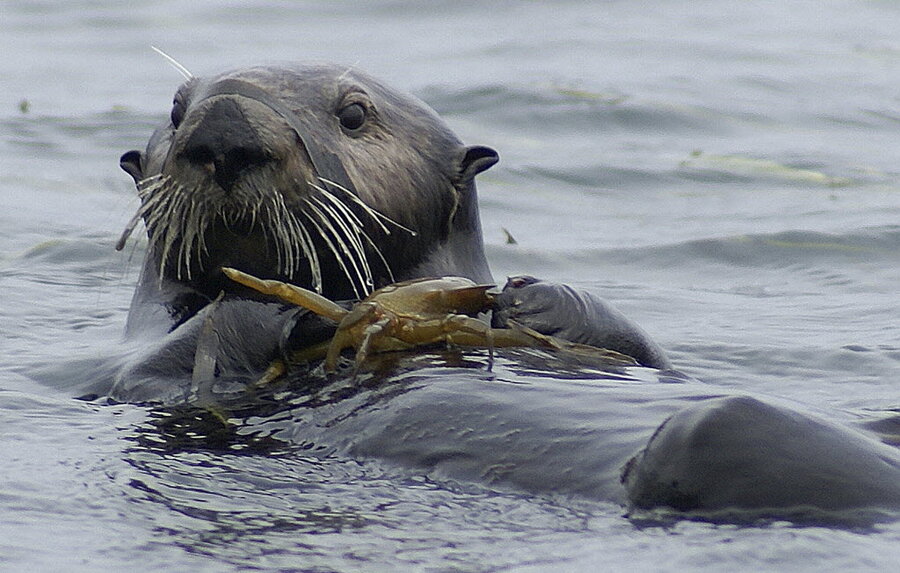How sea otters are saving California's seagrass
Loading...
The familiar sight of a sea otter floating on its back, meal on its belly, is more than a cuddly spectacle, research at a Central California estuary has found.
A study published Monday suggests that by eating crabs, sea otters are indirectly combating harmful effects of agricultural runoff and protecting the underwater ecosystem of Elkhorn Slough, an estuary near Monterey Bay about 75 miles southeast of San Francisco.
Underwater sea grass, which has many environmental benefits including providing habitat for fish, is typically stifled by algae fueled by nutrients in agricultural runoff. But with otters present, the sea grass thrived through the cascading effect of the food chain, according to the study from University of California, Santa Cruz researchers published in the Proceedings of the National Academy of Sciences.
The sea otters eat crabs. Crabs prey on animals that clean the estuary's sea grass of algae caused by farm pollution. The otters keep the crab numbers low, allowing the grass to thrive, according to the researchers.
The sea grass habitat is important to young salmon, cod, and herring and also plays a big role in sequestering carbon and protecting the shoreline from big waves, said Brent Hughes, the lead researcher on the study. Hughes is pursuing a doctorate in ecology and evolutionary biology at UC Santa Cruz.
"If that sea grass goes away, then all of a sudden you lose all these important functions," Hughes said.
Southern sea otters were hunted to near extinction for their thick fur from the 18th to early 20th century. They were believed to have been wiped out entirely from the California coast.
But a small population near California's Big Sur survived, driving a slow recovery to approximately 2,800 otters ranging from Half Moon Bay to Santa Barbara. In 1984, they re-entered the Elkhorn Slough.
Scientists expect their range to continue to expand along the coast, but their recovery has slowed due to diseases and shark attacks. The otters are listed as threatened under the federal Endangered Species Act.
Since the mid-1900s, runoff from nearby farms polluted many California estuaries like Elkhorn Slough with excessive amounts of nitrogen causing algae to grow and smother sea grass, Hughes said.
Sea slugs and other creatures in the estuary historically ate algae and cleaned the sea grass. But in the absence of predators like the otter, the estuary's crab population boomed, with the crabs eating many of the algae-cleaning creatures.
But when otters returned they ravenously ate crabs. Fewer crabs mean more creatures to eat algae off of sea grass, promoting the grass' growth.
As the otter population fluctuated, the sea grass population fluctuated in a similar pattern, according to the data researchers looked at to study the estuary's ecology.







